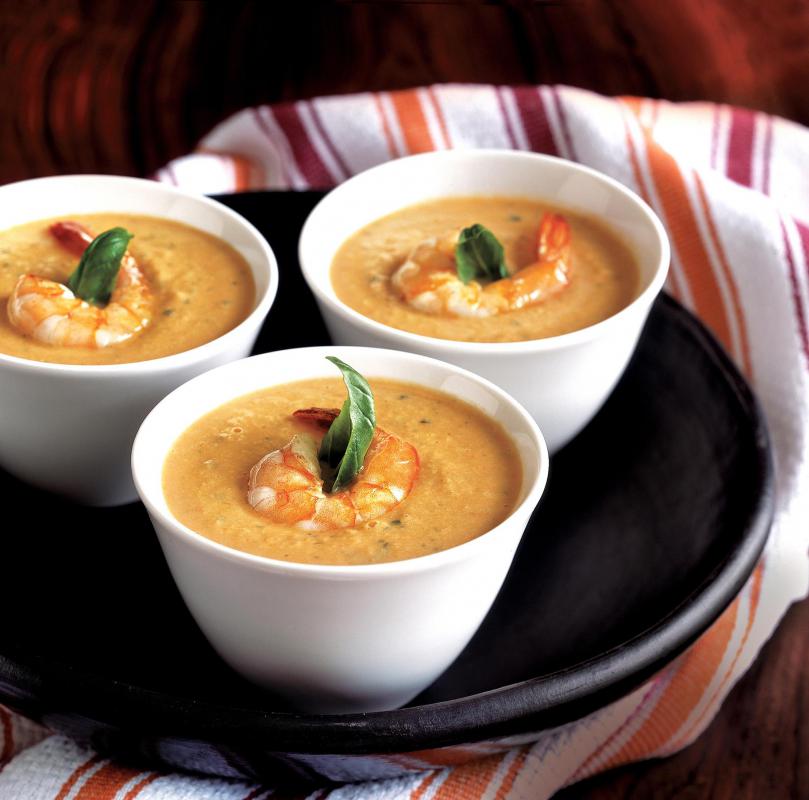At WiseGEEK, we're committed to delivering accurate, trustworthy information. Our expert-authored content is rigorously fact-checked and sourced from credible authorities. Discover how we uphold the highest standards in providing you with reliable knowledge.
What Are the Best Tips for Making Bisque?
The most flavorful bisques are prepared with the freshest available ingredients, although it’s possible to prepare an acceptable bisque with some canned ingredients. Another critical element in the preparation of excellent bisques is to clean all ingredients thoroughly in fresh cold running water, ridding them of any traces of sand and dirt. The presentation of these hearty thickened soups is also important. They’re excellent as the soup course of a dinner, but they’re so substantial that they can be served for luncheon, either on their own or with a salad.
Traditionally, a bisque has a shellfish base, and the shells themselves are often an essential ingredient of that base. For example, the base of most lobster bisques is prepared by removing the meat from the shells of boiled lobsters, then crushing the shells and simmering them with vegetables and spices. The stock is strained from this mixture and thickened, with the lobster meat diced or minced and returned to the soup to simmer for only a few minutes or so before serving.

Bisques are thickened with a wide variety of ingredients, with many recipes calling for multiple thickening agents. For example, one excellent oyster bisque recipe calls for milk, cream and egg yolks as thickeners. Many bisques are thickened by a vegetable puree made by forcing thoroughly cooked vegetables through a strainer. Flour, usually in the form of a roux, is also a popular thickener for bisques, and bread crumbs are found in some recipes as well. One tip that’s well-known but frequently overlooked is that no soup or sauce should be permitted to boil after adding any part of a raw egg to thicken it.

Many cooks use a blender to achieve the consistently creamy texture that characterizes most bisques, and this has become an acceptable practice. In some cases, the shellfish meat is processed in the blender with the rest of the thoroughly cooked ingredients. Some bisques, such as lobster and crab, are presented with bits of the meat in the soup, these morsels having been added only after any blending, for just a few moments of simmering. When preparing most oyster bisques, on the other hand, the delicate oysters aren’t cut at all, and care is taken not to let them disintegrate before the bisque is served.

Any good bisque is best served immediately upon being removed from the heat. For those times when it’s necessary to re-heat a previously chilled bisque, the soup should be warmed in the top of a double boiler, over boiling water. If a chilled bisque has become too thick and must be thinned, small amounts of water should be gently stirred in until it reaches the proper consistency.
AS FEATURED ON:
AS FEATURED ON:















Discuss this Article
Post your comments